Say San Daniele del Friuli and you immediately think of the joys of the table. San Daniele del Friuli is world-renowned for its famous prosciutto, but this village nestled in the hills also has much more to offer. San Daniele del Friuli is rich in art and culture, home to the Biblioteca Guarneriana, the oldest library in Friuli Venezia Giulia, which preserves precious illuminated manuscripts including a 14th-century Divine Comedy and printed books from ancient editions, but also a perfect place to discover the unspoiled nature of these lands. Here runs the Tagliamento River in whose clear waters the queen of San Daniele, or trout, is raised using ancient methods. The river, unique in Europe thanks to the biodiversity of its branches, offers bends that are real beaches for a refreshing stop or a canoe trip. Just outside the town, on the other hand, is the Cornino Lake Nature Reserve, a small lake basin with particularly clear waters and a striking blue-green color, a perfect place for walking, animal watching and birdwatching. Here are ten must-see stops on your trip to San Daniele del Friuli.
San Daniele is a town full of life and things to see. The town’s streets clearly preserve the traces of the thousand-year history of this land, starting with the beautiful buildings that overlook them and give rise to truly evocative views. In Piazza Vittorio Emanuele II the 18th-century cathedral, dedicated to St. Michael the Archangel and with a facade clearly inspired by Palladio, stands out. It is, however, only one of the many jewels preserved in the historic center of San Daniele, on a par with one of the most renowned and ancient public libraries in Italy as well as the oldest in Friuli Venezia-Giulia: the Biblioteca Guarneriana, which preserves priceless illuminated manuscripts. In the very central Via Garibaldi is the church of Sant’Antonio Abate with beautiful Renaissance frescoes. Also not to be missed are the itineraries on the castles and Jewish culture of these lands, but you certainly cannot leave San Daniele del Friuli without tasting its prosciutto. The symbol of these lands for its unmistakable flavor can be tasted in the many typical establishments that dot the streets of the historic center.

The Cathedral of San Michele dominates the main square of San Daniele del Friuli with its mighty and majestic facade. In purely Baroque taste, the church’s current appearance dates back to the 18th century when the design of Venetian architect Domenico Rossi was followed, who conceived, among other things, the double dome, which gives the building a distinctive profile recognizable from afar. Older, on the other hand, is the bell tower, with a square plan, which was built to a design by Giovanni da Udine in 1531, in stone from Anduins. Very beautiful, however, is also the interior of the cathedral, which houses valuable sculptures such as the imposing high altar by Francesco Fosconi, who made it in 1735 in pure Baroque style and which rivals the baptismal font, surmounted by a statue of St. John the Baptist, in white stone, the work of Carlo da Carona, a pupil of Pilacorte, who around 1500 was very active in northern Italy and left an indelible mark of his work here.
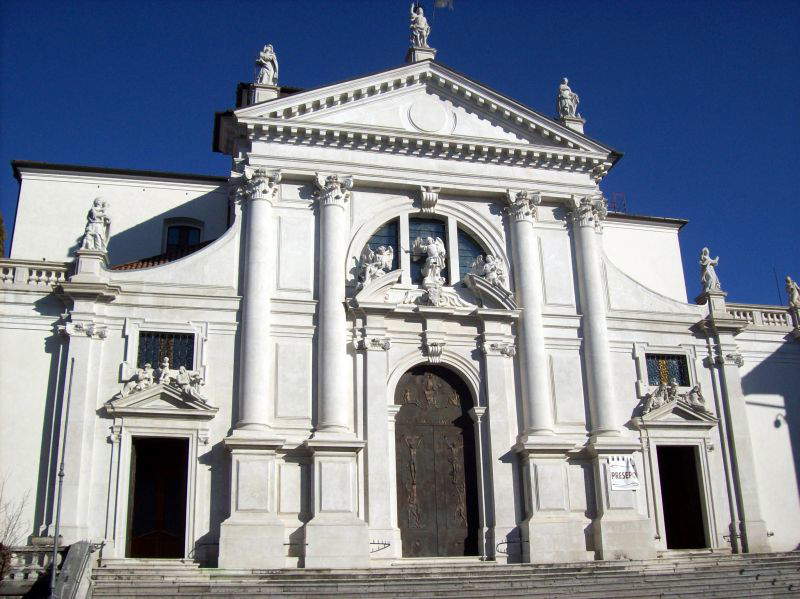
All that remains now of the ancient castle of San Daniele are a few ruins, a tower and the remains of the embankments. Thanks to its elevated position, however, it is certainly one of the most scenic places in the whole area, and here the ancient church dedicated to St. Daniel stands out above all. This little gem tells like few other buildings the history of the village and still bears clearly visible in itself the traces of the passage of time and the succession of styles and sensibilities. Of great impact is the imposing bell tower, carved from a castle tower, while the central portal dates from the mid-18th century and is characterized by a distinctly Baroque style. This mixture of styles and elements from different times and eras continues with the other portal, which came from the cathedral and dates from 1500. This was moved to San Daniele in Castello only two centuries later and is the work of Carlo Da Carona, to whom is also owed the altarpiece of the left aisle with the Madonna Enthroned with Child and Saints Sebastian and Rocco and, in the lunette, is a pietà. Finally, not to be missed is a small Adoration of the Magi dating as far back as the 12th century that can be seen outside the apse.
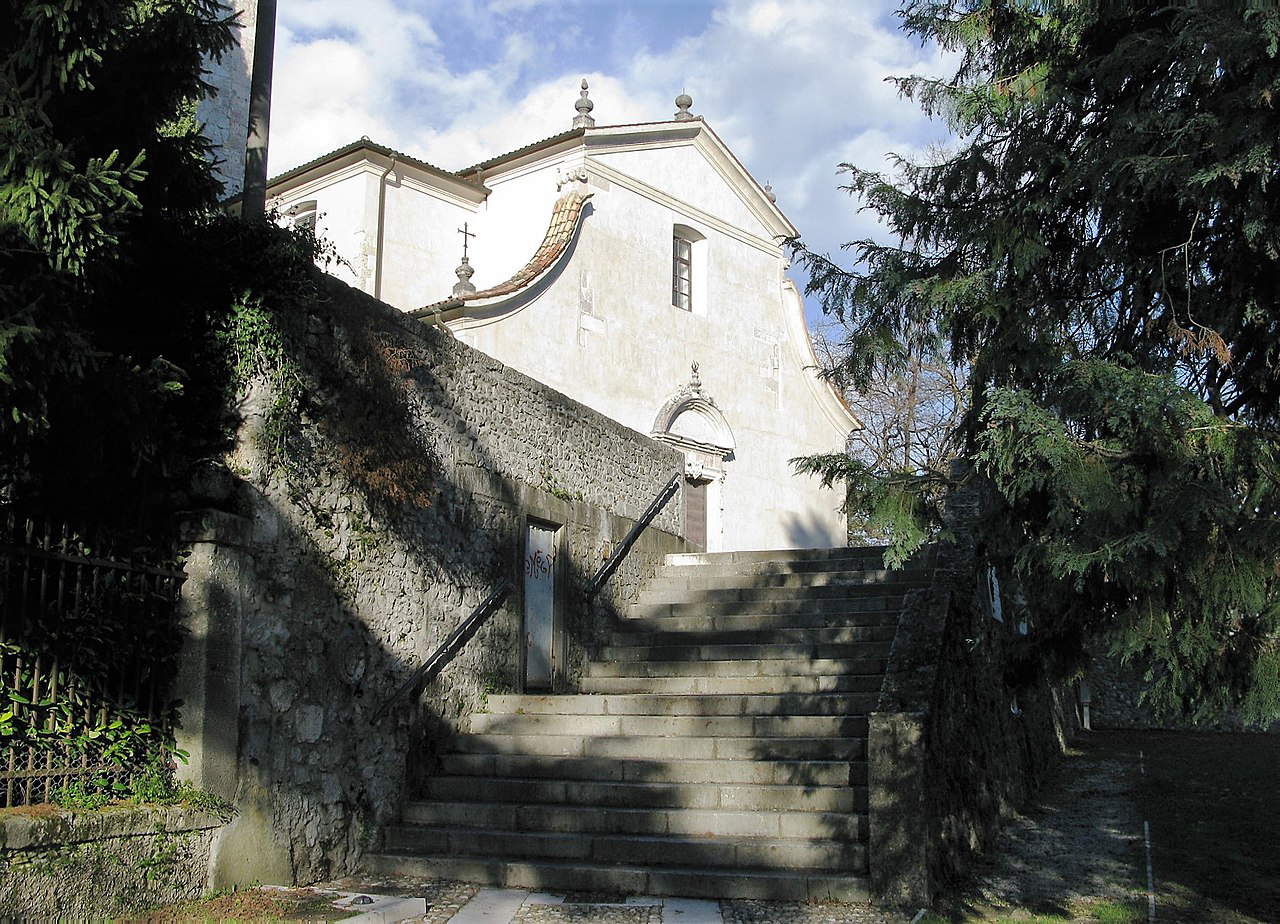
Opposite the bell tower of the cathedral stands the only medieval building in the ancient village, the Casa del Trecento, which in the past was home to the Pawn Shop of San Daniele del Friuli and now houses an exhibition of historical military memorabilia related to the Alpine Corps. It is hard to imagine a single building that succeeds better in telling the indomitable character of the people of these lands than the Casa del Trecento. It is an ancient building that managed to tenaciously withstand even the tremendous earthquake that devastated the entire region in 1976. Since then the Casa del Trecento has been completely restored and entrusted to the management of the National Alpine Association of San Daniele del Friuli. Inside what is now a national monument in its own right is the military historical memorabilia display room, a small museum that collects artifacts, pennants, documents, photographs, posters, uniforms and postcards related to the military life of the Alpini in the world conflicts, in barracks and in the trenches.

The ancient Pilgrim Church has been silently observing the life of San Daniele del Friuli since the early 14th century. A long life, but not an easy one since already a few decades after its construction the church of Sant’Antonio Ab ate was heavily damaged by a frightening earthquake. In the following century the church was thus not only restored, but also enlarged with the addition of the choir and sacristy. These interventions were then followed by the construction of the new facade in Istrian stone in a late Venetian Gothic style, with a pointed arch portal and pierced rose window, and the mosaic stained-glass windows, the first of their kind in Friuli. It is inside, however, that the church of St. Anthony holds an incredible treasure: a marvelous of Renaissance frescoes from the region, works by Martino da Udine known as ’Pellegrino da San Daniele.’ To create what is known as ’the little Sistine of Friuli,’ the painter worked on it in various stages, from 1497 to 1522, highlighting the gradual formative evolution from the youthful Tolmezzo manner to the more mature Venetian, Ferrara and Umbrian experiences.
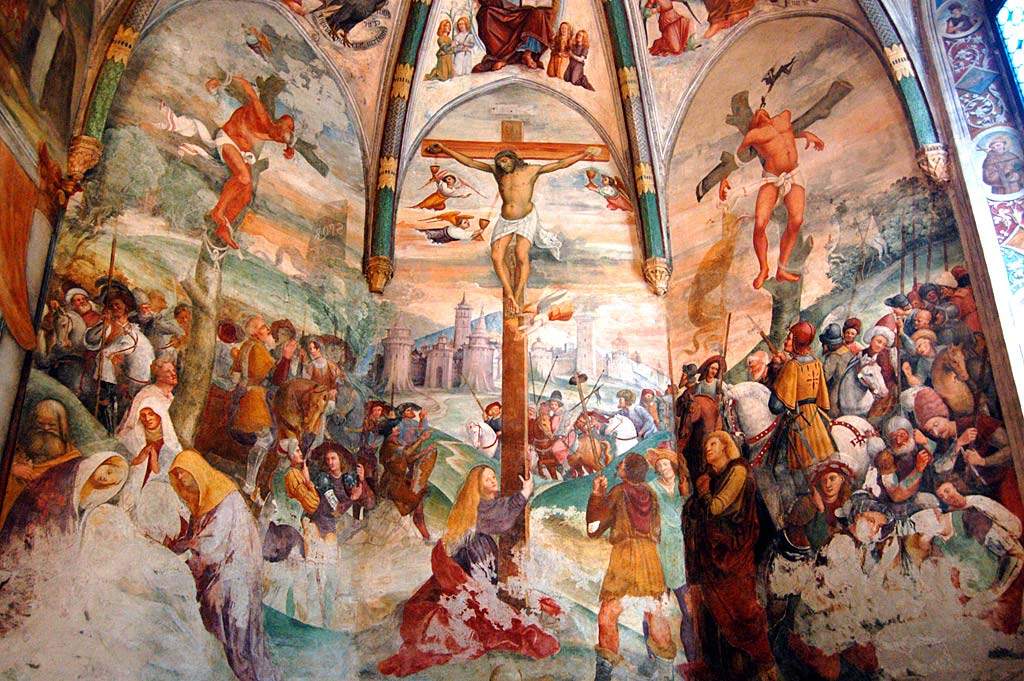
A Palladian jewel in the heart of San Daniele del Friuli. Porta Gemona brings together strength and grace, grandeur and style, combining to perfection the defensive purposes for which it was designed with the quest for beauty and perfect balance that are characteristic of the great architect. Andrea Palladio designed Porta Gemona in 1579 when Venetian cardinal Giovanni Grimani commissioned him to build what was an integral part of the medieval castle’s defensive system. The structure is closely reminiscent of the Bollani arch, built about 20 years earlier in Piazza Libertà in Udine, and takes the form of a round arch with an entablature of living stone. This entire structure then grafts into a massive defensive turret from which the entire surrounding area could be kept in check in the past. Despite the passage of centuries and the earthquakes that have struck San Daniele and all of Friuli arch and turret are still in excellent condition and are among the most photographed monuments by tourists.
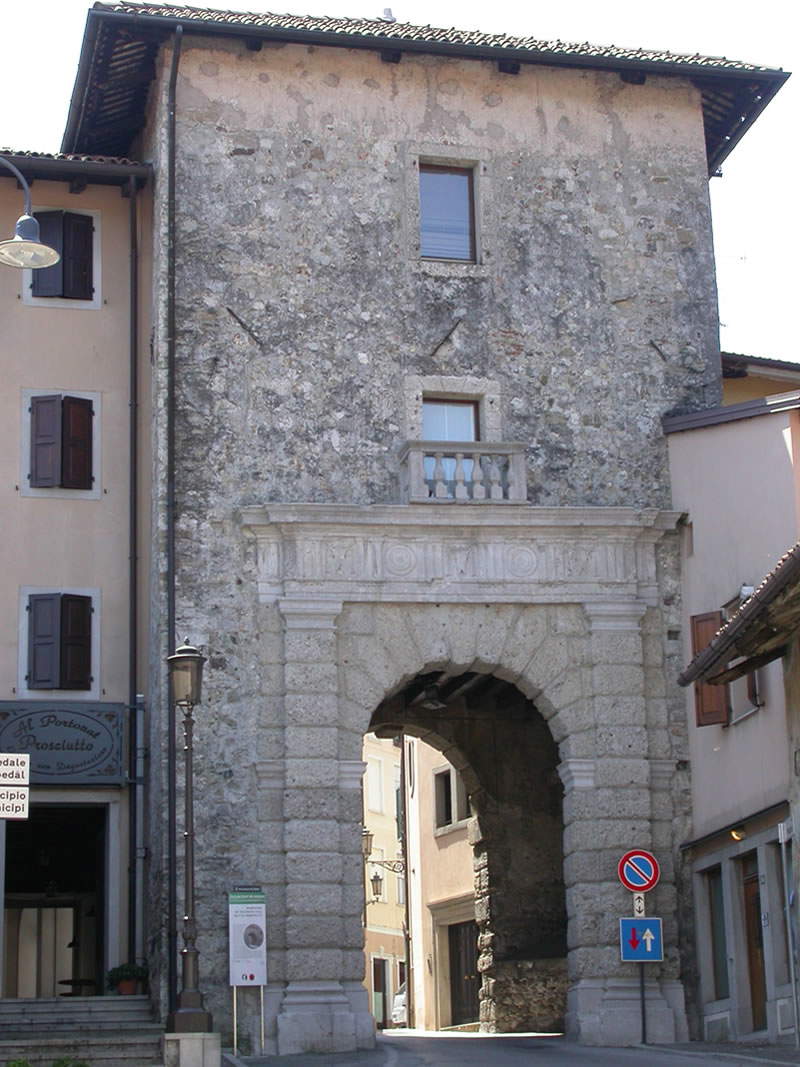
The beating heart of San Daniele del Friuli is the Guarneriana Library. This is located on the right side of the cathedral and is housed inside the former town hall. The library dates back to 1466, is the oldest in Friuli and owes its birth to the donation of 173 manuscript codices, a collection of the 15th-century humanist Guarniero d’Artegna. Today the Guarneriana library preserves more than 600 codices, many of them richly illuminated, including a marvelous Byzantine Bible from the late 12th century and a manuscript witness to the Divine Comedy, as well as 84 incunabula, 700 cinquecentine, and about 12 thousand ancient printed editions. That of preserving the very rich heritage put together over the centuries is the main goal of the Guarneriana today, but guided tours of the Antiquarian Section, curated by library staff, are also regular. A number of important archival funds are also preserved in the Guarneriana, including the Historical Archives of the Community of San Daniele, the Municipal Historical Archives , the Historical Archives of the Hospitale di Sant’Antonio abate and others.
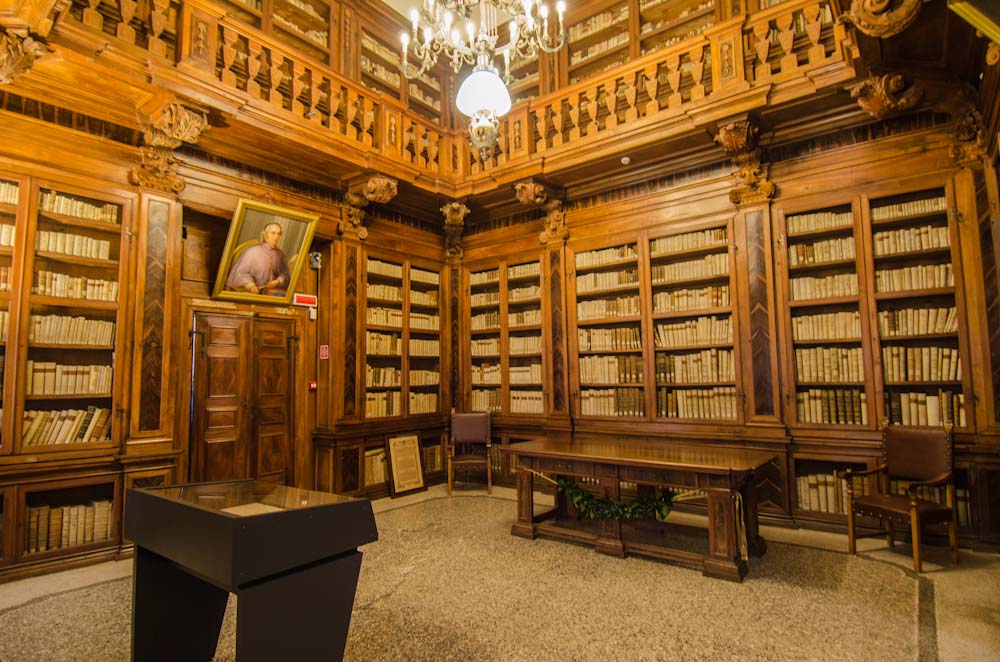
A splendid example of the Venetian neoclassical style, the Palazzo del Monte di Pietà is another of the stars of Piazza Vittorio Emanuele. Its construction dates back to the second half of the 18th century. Here for centuries the fortunes of all these lands were administered with the ancient Mount of Piety, which was divided into three different structures, the White Mount, the Yellow Mount and the Heavenly Mount, to which different tasks were assigned regarding commitments and disengagements. What still strikes the visitor today, however, is its austere grandeur with the distinctly neoclassical taste that is best expressed in the large main gable and by the arches on the palace’s exterior. Until recently, the palace was home to a banking institution, while temporary exhibitions and conferences were often held on the large upper floors. In early 2022, however, the City concluded the purchase of the Pawnshop thanks to two grants from the Friuli Region, and the new City Hall will soon be moved here, while the ground floor will house the modern section of the Guarneriana Library.
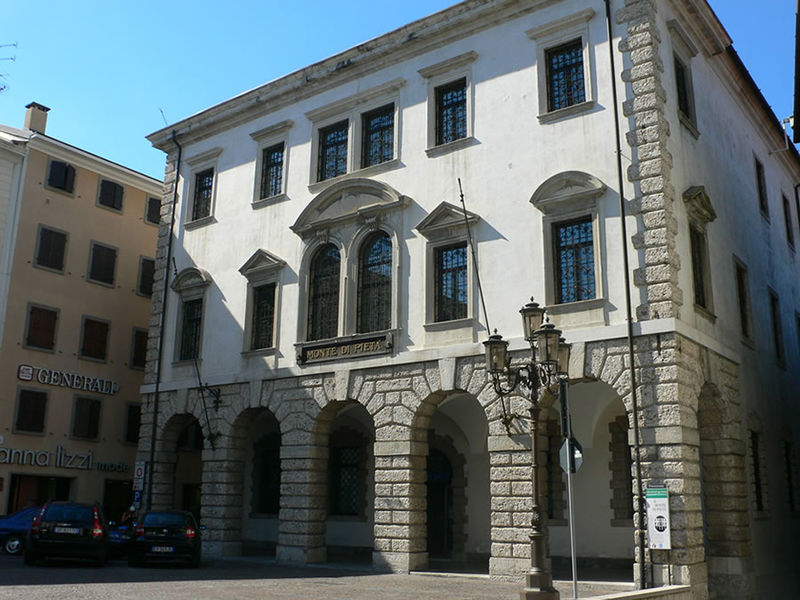
A glimpse into the life, culture and traditions of San Daniele and all of Friuli. This is what can be admired by walking through the interesting rooms of the Territory Museum. Here a considerable amount and heterogeneity of materials is preserved, making it possible to articulately define the historical and artistic evolution of the town and the hillside area. The museum was formally established in 1978 on the premises of the Masetti de Concina palace in the historic center of San Daniele del Friuli, a stone’s throw from the Castle Park, but since the mid-1990s it has now moved to the former 17th-century Dominican Convent on Udine Street. The exhibition is divided into three sections: archaeological, sacred art, with works from places of worship in the area, and bequests donated by distinguished citizens. On the other hand, precisely the first museum nucleus can be considered the bequest of Giuseppe Vidoni, a Sandanielese psychologist active in Genoa, by his son Giacomo, who around the middle of the last century decided to donate the vast artistic heritage to the community of San Daniele for the establishment of the town museum.
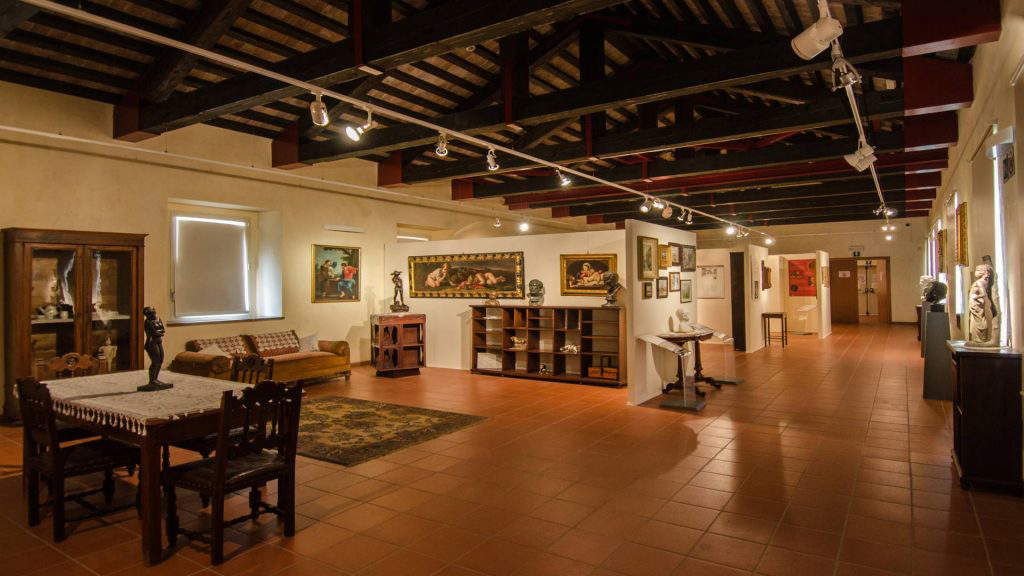
On the large esplanade overlooking the town are still the ruins of the ancient medieval castle. All that remains today of what was once the political and administrative center of the town is a tower and the remains of the ramparts, but above all the wonderful public park from whose belvedere there is a splendid view of the entire plain. For all residents of San Daniele and for all tourists and travelers, the Castle Park is a must-see for seeking a bit of tranquility and relaxation surrounded by nature and suspended in history. The castle of San Daniele traces its origins as far back as the 13th century, but it was only in the following centuries that it experienced its greatest splendor when it consisted of three portals, eight towers and a crenellated wall. All of this can only be guessed at today by observing the lay of the land and those few remaining remains, but the area has never ceased to be barycentric for the town by hosting many events and manifestations that revive its ancient beauty.

 |
| San Daniele del Friuli, what to see: itinerary in 10 steps |
Warning: the translation into English of the original Italian article was created using automatic tools. We undertake to review all articles, but we do not guarantee the total absence of inaccuracies in the translation due to the program. You can find the original by clicking on the ITA button. If you find any mistake,please contact us.